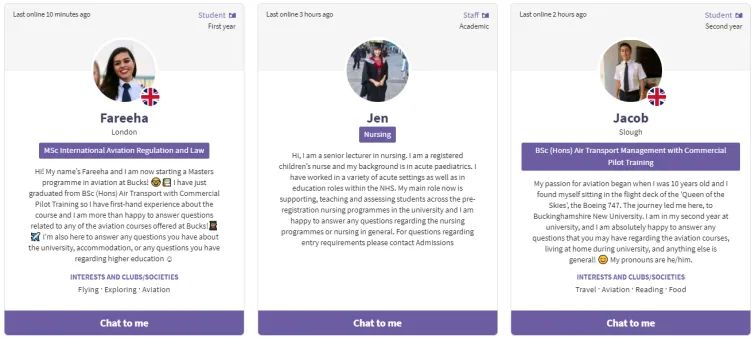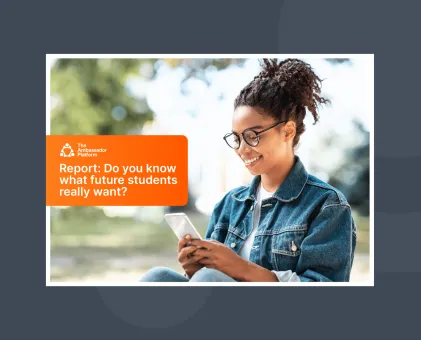How to use your student advocates to engage more prospects

'We still lug thousands of boxes of printed prospectuses to hundreds of UCAS fairs and school events across the UK [...] we hand out vast quantities of hard-copy prospectuses or mini guides, pick up 15% of them from the bins afterwards and acknowledge that a further 20% are left on the bus back to college with the chocolate wrappers and chewing gum.' - Katherine Lloyd Clark, Assistant Director at the University of Exeter
When it comes to engaging prospective students, many higher education institutions still depend on traditional marketing, recruitment and admissions methods.
But, in today's digital-driven world, relying on generic paper prospectuses and sporadic in-person events won't sustain your recruitment targets.
Why? Because they're unscalable, difficult to maintain, and can't communicate what the experience is really like.
To stay relevant and keep your recruitment funnel flowing, you'll need to provide more relatable information in a digital, engaging format.
This is where the student ambassador role can really save the day. Here's how.
Create user-generated content
Did you know that 70 percent of consumers trust online peer reviews and recommendations more than professional content and copy?
Your prospects want to absorb relatable, human information. And where better to source genuine content than your student advocates?
Fuelling your admissions strategy with user-generated content - such as blog posts, images, videos and FAQs - can engage a larger number of prospects in a scalable and cost-effective way.
The University of the Commonwealth Caribbean, for instance, went from no student-led content to:
- Publishing 85 pieces of ambassador content in six months
- Gaining over 500 views on their student-answered FAQs
- Communicating with over 200 students from 11 different countries
Generating this content is as simple as commissioning student advocates via an Experience Communication Management (XCM) platform. From there, you can collect, review and re-purpose content across channels to reduce effort and increase exposure.
Encourage peer-to-peer communications
Why not take your ambassador-generated content a step further with direct communications?
We're not talking about fleeting open days where conversations get lost, but rather online, scalable and open communication channels that can break down barriers and reach prospects globally.
By adopting online peer-to-peer and group conversations, you can:
- Encourage your prospects to ask the important questions they want answered in a friendly, engageable way
- Support your in-person events and continue valuable peer-to-peer conversations, all in a cost-effective manner
- Reach a wider range of prospects - both demographically and geographically - by demonstrating a diverse portfolio of student advocates
- Scale up your efforts and allow your student advocates to strike up conversations in a time and manner that suits them
Let's take a look at a real-world example:
-png.png)
As you can see, Bucks New University makes great use of showcasing embedded student profiles and calls to action. This has succeeded in boosting the university's engagement rates.
Now, Bucks New University receives 100+ new interactions per month. Of the interactions measured, 24 percent of peers went on to apply. Better still, all of this is done in a cost-effective manner.
Put your student advocates front and centre
Old fashioned engagement tactics may help your student recruitment, but they won't set you apart from the crowd.
To really resonate with your prospects, look to your greatest asset: your student ambassadors.
By commissioning and repurposing content, as well as setting up direct communication channels, you can create a rich, diverse and unique portfolio of content that can power your student engagement strategy.
Keen to find out more? Get in touch with us and see what TAP's Experience Communication Management platform can do for your institution.


